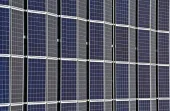
TNB to invest $4.5b annually for energy transition
It will invest in regional interconnection to help decarbonise the ASEAN power sector.
Malaysia’s Tenaga Nasional Berhad (TNB) will be investing around $4.5b (RMB20b) annually over the next 28 years in line with its target to accelerate its Energy Transition Plan which aims to reach net-zero emissions by 2050, the company said in a statement.
President and CEO Dato’ indera Ir. Baharan Din said in a forum that the investment will open opportunities for the company to more than double its earnings before interests and taxes.
Bahrain said that the company will also grow its regulated asset base to around $22.4b (RM100b) by 2050 as it continues to invest in the regional grid.
“We will pursue Regional Interconnection that will allow for a wider reallocation of renewable energy resources that will help decarbonise the ASEAN power system as well as strengthen the security of supply,” he said, adding that the grid will enable to company to potentially earn RM7b by 2050.
The fast-tracking of the company’s decarbonisation plan will also raise the enterprise value of TNB Generation (Genco) Sdn Bhd for a possible initial public offering, he said.
TNB Genco aims to reach a revenue of around $8.95b (RM40b) from the domestic generation market by 2050. TNB is also studying gas and hydropower projects in Southeast Asia, targeting a capacity share of around 800 megawatts by the same period.
Also crucial in the company’s sustainability agenda is the TNB New Energy Division which aims to reach 14.3 gigawatts of capacity by 2050, with an equity investment of around $7b, to contribute to the expansion of its renewable energy portfolio.
Bahrain also said they are developing the electric vehicles (EV) ecosystem as part of its energy transition. He said TNB is investing around $20.1b (RM90m) in the next three years to support the adoption of EVs, which will reach 500,000 by 2030 and will account for around $279.7m (RM1.25b) in annual electricity revenue.



















 Advertise
Advertise






